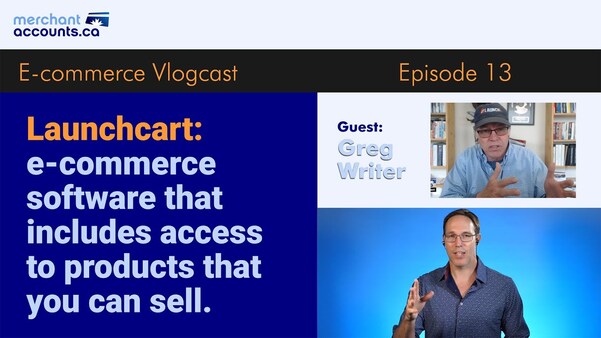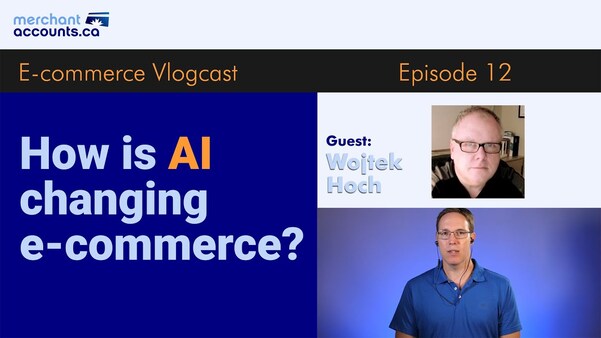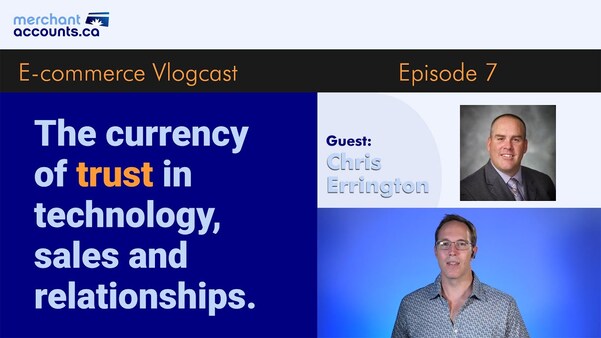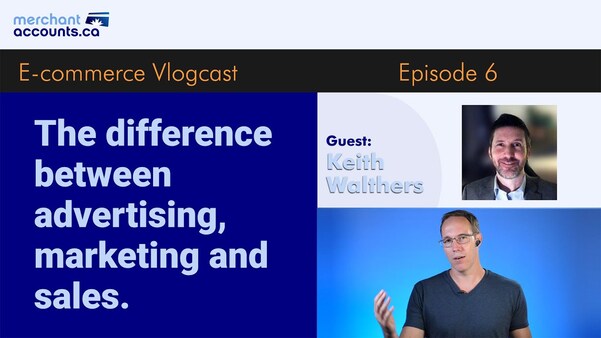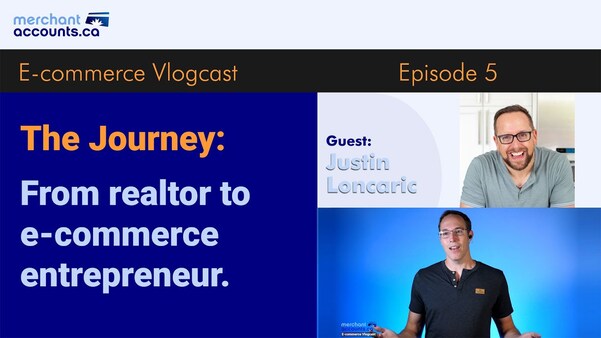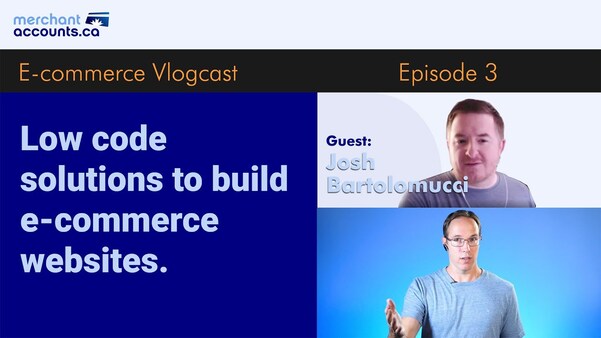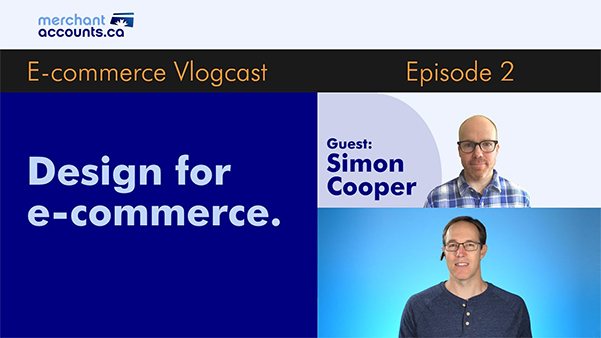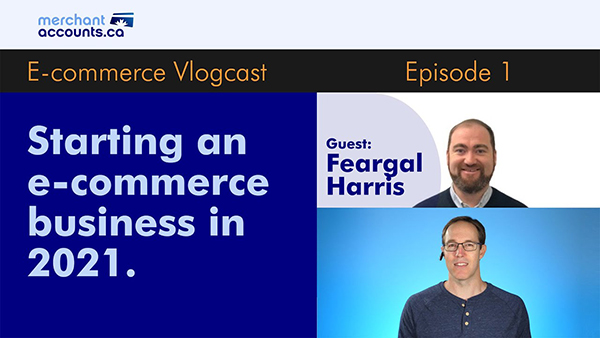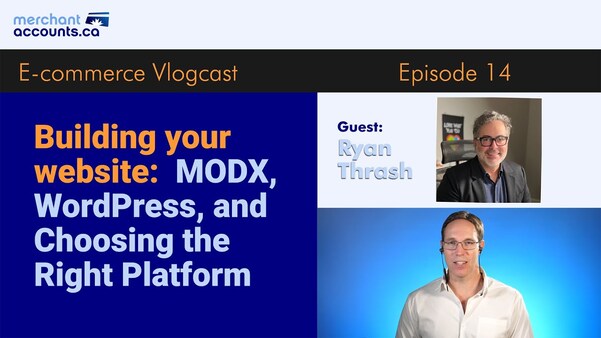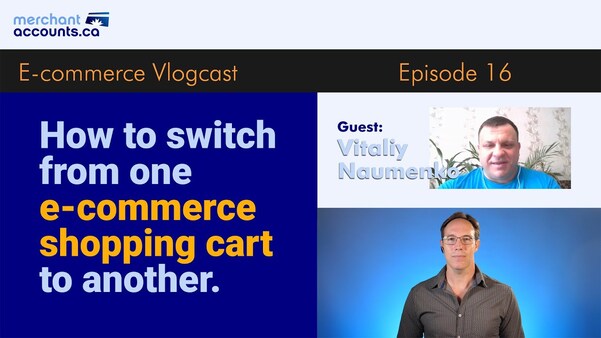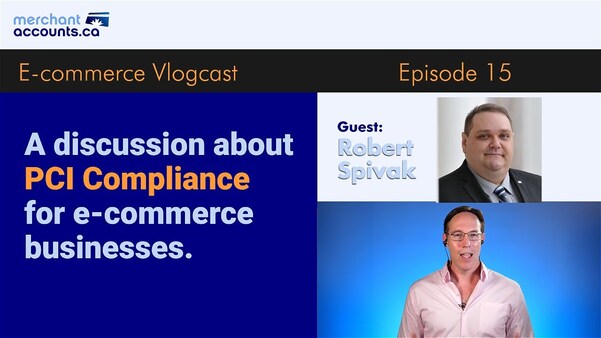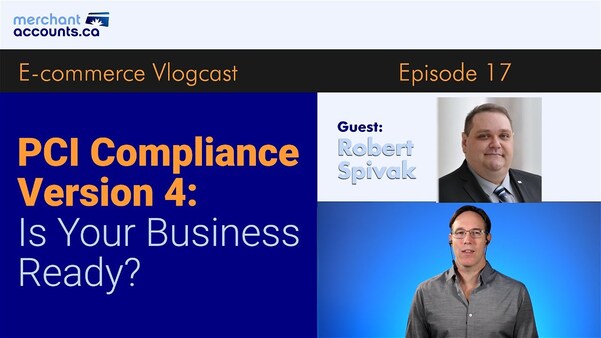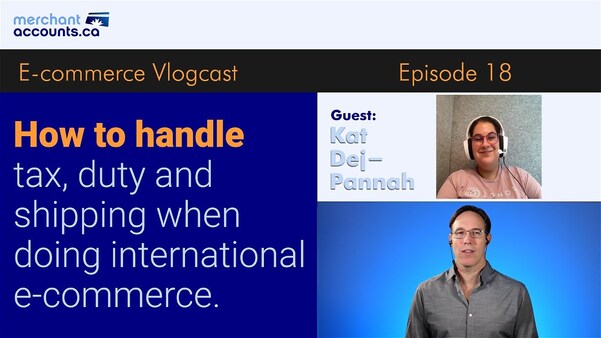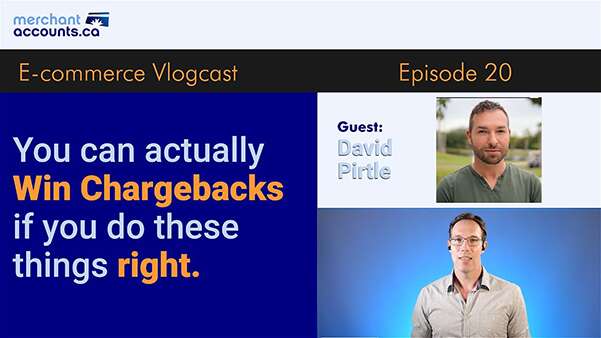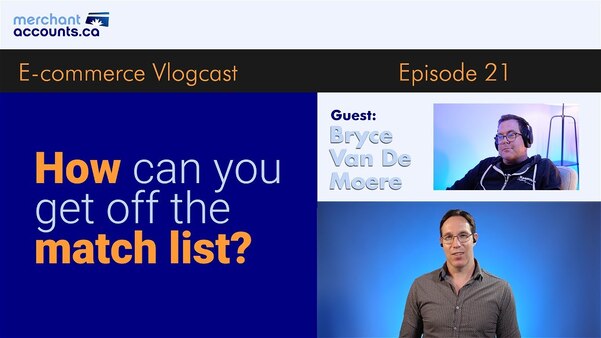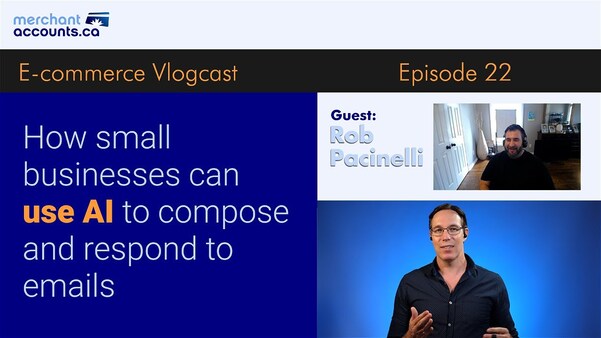February 16, 2024
by David Goodale
How Snapwrite Uses AI to Automate the Creation of Product Pages for E-commerce Websites
(Slightly edited from video transcript for greater readability)
David Goodale:
Hello, David here at Merchant-Accounts.ca with another episode of the podcast. Today I'm speaking with Athiya Rastogi, the co-founder of Snapwrite. Snapwrite is an interesting software platform that generates search engine and human-friendly descriptions and details from photos. It's a practical, real-world application of AI for e-commerce. I found this interesting and reached out to Athiya to learn a little bit more. Athiya, thanks for joining today.
Athiya Rastogi:
Thank you so much for having me, David.
David Goodale:
Oh, my pleasure. I'm probably like everyone, every human on earth who was blown away when we first saw Chat GPT. That was my first interaction with what you would call AI and it's kind of completely for a non-expert. It's kind of overwhelming. You can look at it and like, this is awesome, but how do I use this in my business? I'm still unclear how regular business owners should integrate AI into their business. I know Snapwrite is finding a real-world use for AI technology. I'm wondering if you could start by telling us a little bit about your business and kind of also what led you to launch it.
Athiya Rastogi:
So Snapwrite produces product detail pages just from images in a couple of clicks. You have a bunch of images. The use case mainly applies to where we started from as pre-loved stores. They have thousands of items that they need to put online every single month to make their store run. Every item is one of a kind, how do you process so many items? As a small business owner solopreneur, it can be a very time-consuming and expensive affair. If you're using Snapwrite, you can just upload hundreds of your images in one go. Within a few seconds product detail pages are generated, which are search engine optimized. That's done because items are well, very well attributed. Every single image gets about 15 to 17 attributes which are processed to create an entire product detail page.
David Goodale:
That's incredible. all of the info is extracted basically out of the image by the AI. Is that correct?
Athiya Rastogi:
Everything is extracted from the image. You just, a person just has to look through if everything is correct. This is a very I would say small portion of what we are doing at Snapwrite. We visualize that every item is going to become circular, every premium high-quality item. how can we promote and enable sustainability? We talk about it, but implementing it is hard, and giving resellers the resources to be able to do that just makes it possible, makes it easier.
David Goodale:
That makes sense. You know, on, on a personal note, just today, you know, on Google Photos, it kind of brings up memories. It brought, and I slid it down on my phone today and it said, hug it out. I'm like, what are you talking about? Hug it out. Then it was like these historical photos of hugging, my wife hugging our cat. I'm like, how does tech, how does AI even know that? I guess the technology has just come so hard far that it can be relatively easily, and very accurate. Or maybe that's a question. How accurately can it basically, computers can tell what you're looking at now. Is that the case?
Athiya Rastogi:
That is correct. Yeah.
David Goodale:
That's really.
Athiya Rastogi:
Yeah. The reason you're seeing that on Google, is Google has had people's data for so many years. They can very accurately tell and predict what's going on in the images based on the volume.
David Goodale:
Interesting. Now I'm super curious, how did you get to launch this business? Are you an expert in AI, and how did you get to launching Snapwrite.
Athiya Rastogi:
I studied statistics and I specialized in machine learning and quantitative finance at the University of Toronto. I came up with it during the last year of my university where I was just, I'm very interested in fashion. My great-grandfather had a jewelry business, which was passed down to my grandma's grandfather. Then I knew that this was the type of career and the line I wanted to follow, have my own business in fashion. While in university I started tinkering about how I could align technology with fashion. at the same time my other side of the family, my father's side of the family, they are involved in the furniture business. They export items to Home Sense. They were producing a manifest and they would outsource all this work. We just realized that instead of multiple people handling it and it taking so much time, even if you make a small error and that manifests it's, it's troubling because it doesn't get accepted or a wrong order gets shipped.
Athiya Rastogi:
And that happened to us once and then that's how we created Snapwrite. The day when we launched it, about a year and a half ago, we started getting calls from resellers. We were a part of an accelerator program. That's how it was facilitated. We realized, okay, this is one use case we could enter. Because In resale there are thousands of one-of-a-kind items and people are spending their time, they're doing it manually. It can be matched faster. Then, after we processed the pre-love side, we entered the e-commerce pure retail side where you sell brand new items that everything is manual. Even if you automated via Chad GPT, so many small nuts and bolts go into creating a solid listing. Mm-Hmm. how a merchant wants to attribute products versus how a consumer wants to search for those items online are two very different things. how can you marry both of them and create something that people can find when they are on a specific website? Somebody's searching for pants, somebody's found trousers. If your items are not well labeled, sometimes those words are not even in the description or the title. A retailer can miss out on the opportunity to get their page exposed to multiple people. We're bridging that gap.
David Goodale:
You're sorry to cut in. You're talking about the keywords and the relevancy of the output that's generated. Is that correct?
Athiya Rastogi:
That is correct. I quickly went from telling the story and then connecting it to how Snapwrite is working. It's all good. It's just been that transition. Yeah.
David Goodale:
Perfect, perfect. It's funny, while you were talking, you even thought I could just use the example of this podcast, how hard is it to record a video? Not that hard. How hard is it to get to transcribe it? Not that hard, and to find an image for it is not that hard and da da it's like a million little tasks make a mountain of work. It sounds like that's kind of what Snapwrite's doing. It's taking that work and it's helping both from a quantity perspective because you're just lessening the load. But also, you alluded to quality, and I want to talk about that for a second. You spoke about how the consumer or customer would want to search for that image. how do you approach, I do have a background in SEO like a zillion years ago, but I know that keywords and stuff like that, it's a, there's a lot that goes into that. how do you approach that with Snapwrite.
Athiya Rastogi:
So, with Snapwrite, we are aware that there are merchant-driven keywords on how a retailer or a brand is assigning keywords to their items. Then there is the other side, which is the consumer side. What words the consumer is using to search for these items? For example, lately, the term quiet luxury became very popular. If you do not have it on your website, you're missing out a, as a retailer because people are very actively searching for quiet luxury on Google. usually in the description or the title, that word is not there. If it's present inside your keywords or in insights yeah, the keywords, people will be able to eventually find your item or the chances of your ranking become higher. Mm-Hmm.
David Goodale:
Mm-Hmm.
Athiya Rastogi:
That's how we first.
David Goodale:
So how do you make the AI, so you're talking about a trend, I think you're talking about this, this keyword phrase is trending or is more popular. Do people plug that into snap, right? Hey Snapwrite, Wiggle this into these descriptions, or is Snapwrite also spidering content and being aware of trends, how does that part of it work?
Athiya Rastogi:
So, we're able to predict trends and on the other side, we just assign basic attributes to items like sleeve length, neckline, about 15 to 17 attributes, and additional trends. Once that's done the person who is responsible for that website reviews that and then they can publish it. It's, it's a very simple process.
David Goodale:
Okay. Can you tweak how long or how short or how descriptive you want the text to be?
Athiya Rastogi:
You can very much tweak it. We work very closely with the retail partners and we take into account how their listings have looked over the last few years and then train that data accordingly.
David Goodale:
Perfect. ultimately, a big part of this is it is search engine friendly and human-friendly. It's straddling both worlds.
Athiya Rastogi:
That is right. We're trying to make a successful website work. Like the very, very big brands websites have the resources to maybe hire a data science team, and get that all done in-house. But what about you don't have a data science team? How can you still make it happen? That's the goal we are trying to accomplish along with enabling circularity for items.
David Goodale:
It's interesting to me. so, you might've said this to me earlier, and I apologize if I didn't catch it, but in addition to the, like, is this also forming the sales copy? Like I'm picturing the image like I'm picturing the page from the consumer's mind. Here's the item and the headline. Is there also like sales copy written about the image? Or is it left to kind of a simpler description?
Athiya Rastogi:
There's also a sales copy so I don't exactly understand. The description is a part of a sales copy Yes. After the description. There are attributes as well that also are a part of a sales copy.
David Goodale:
Mm-Hmm. Maybe you did, it's probably my fault for asking. Can you give an example, of a white shirt that might Snapwrite? Generate, just so I have some point of reference and our viewers have some point of reference.
Athiya Rastogi:
So, it can tell the type of color you have or the neckline is coloring the buttons, it's a button down, then the cups, the fabric the type of trend, probably it's going to qualify under casual or classic or quiet luxury and about seven to eight more attributes. Once that's done, we can come up with exactly how the retailer or the brand has been writing their copy and translate those attributes into that.
David Goodale:
Okay. Because if I'm going to, now the only AI that I've ever really interacted with is Chat GPT. If I said, Hey Chat GPT, write a couple of paragraphs about my white collared button-down shirt, it might say something like, oh, it was nice, it's better than me. I'm terrible at this. But is it doing something like that? Is it trying to, let me get to my question. I'll frame it more sensibly. Even for a human finding a balance between identifying a prospective customer's wants, and needs, and overcoming their fear of purchasing like these, is a challenging thing to do. I'm curious to know how much of that is trying to be addressed with Snapwrite.
Athiya Rastogi:
So, there are two sides to it. When we work with resellers, we don't add a romantic copy. It's very strictly the attributes that are mentioned. People can find those items versus when we are working with brands or retailers, they have a certain tone they want to include in the descriptions. Sometimes it's a romantic description followed by attributes. Sometimes it's something else. We try to adapt to them, or we adapt to the format that they are doing their sales copy or the way they are doing their sales copy
David Goodale:
That's the word I think I was looking for the romantic description, the marketer in me failed at that moment. But you passed the test.
Athiya Rastogi:
So, one of the examples I can give you is the brand we work with at the base in Montreal. They write a romantic description, which is three, or four lines, and then they add about 10 to 12 attributes. We do both for them.
David Goodale:
Okay, perfect. now let's say that some retailers are watching this and they're like boy, I'd sure love to automate that. How do you go about putting Snapwrite on your website? How hard is it to integrate?
Athiya Rastogi:
It's very simple. It integrates with both their ERP and the e-commerce channel. let's say somebody's using a retail one, it integrates with that. This is just an example. We integrate with other ERPs as well. Then we integrate with the e-comm channels like Shopify, Magento, WIX, and so on. Just a single image is capable of creating an entire sales copy, an entire product detail page, everything you need for both your ERP system and your e-commerce channel.
David Goodale:
So, Athiya, I see other possible uses for image recognition, and AI as well. For example, things that are coming, to mind migrating data from one platform, like image data from one platform to another because you're automating the recognition of the images. I don't know, are there other ways that you're exploring that Snapwrite? Can help out or potentially help out business owners?
Athiya Rastogi:
Well as I mentioned in the beginning, one of the things we are very much focused on is the circularity of items and sustainability. I see a potential where brands would be able to tell their shoppers or their consumers, so the items that they're wearing, can be it to their nearby pre-love stores. There are a lot of pre-love stores in Canada and we are covering these pre-love stores and these retailers. Once people give their items and resellers can purchase those items the shoppers can go back and buy from the brand again and the item which they had previously purchased goes back into circulation so somebody else can buy it rather than it ending up in the landfill.
David Goodale:
Interesting. That's interesting. kind of like, so there's a green side to it as well.
Athiya Rastogi:
That is right. Yeah.
David Goodale:
Perfect. I'm just curious, being someone that works in AI, have you seen any other, because I didn't know, like, I learned today and in the conversation from you just how good AI is at recognizing images. Have you heard of any other interesting uses of AI for e-commerce businesses, that e-commerce businesses could perhaps be aware of?
Athiya Rastogi:
I would say a lot, like given the whole AI wave everybody is trying to, every e-commerce company or software company is trying to incorporate AI in their workflows. People have determined different use cases. Some people are working purely with images, some people are working purely with content. I would say that every aspect of e-commerce has been touched by AI. If somebody is looking to solve a problem in their business, I'm very sure very confident somebody has already created an AI tool or a platform to solve that problem.
David Goodale:
Interesting. I want flip, flip the questions a little bit here because I know Snapwrite has been around for over a year. You're in that growth stage and I work with a lot of growing e-commerce businesses. Yeah. How are you making merchant? Because Snapwrite is not a household name and it's not, you're two words that you normally put together. How are you making merchants aware of your platform?
Athiya Rastogi:
So initially how we found our users was we were a part of an accelerated rate of program. They had some connections within e-commerce. We got warm intros and a lot of it came through warm intros and then word of mouth. You have your initial customers, they like your product and then they start recommending other users or their fellow people that something like this exists and it's going to benefit you. That's how we entered the market
David Goodale:
And you know, you're doing a good job if you're getting recommended to other people. That's how you know you're doing it.
Athiya Rastogi:
Yeah, it's extremely helpful. Yeah, exactly.
David Goodale:
I always say referrals are the best way to get business and it is because you're through the door and there's an implicit sense of trust and it just means you're doing things right. I'm glad to hear that Athiya, one of the things that I ask everybody who comes on is their secret tip or their secret weapon for e-commerce business owners. Now, it doesn't have to be e-commerce, it can be anything, but I'm opening up the floor to you. What's your best secret advice?
Athiya Rastogi:
There is no secret. Well, because, of course, I'm talking about it. I believe that's true. People should know about it. After speaking with a lot of businesses, we learned that almost everyone wants to include SEO in their website because it needs to be discoverable and people can find it. Hence, if more product clicks happen, sales will go up. SEO takes some time to kick in. You start including practices that are good for SEO. It can start from three months to six months and you start seeing results by the end of six months, eight months. It gets better after the first year, even better after the second year, and so on. I would say just be patient and if you're putting in the work yeah, it might take a couple of months at least to kick in and to start seeing what's going on.
David Goodale:
I love that advice. I love it. You know, if there's anything that I've kind of learned in life, I wouldn't walk around saying somebody, I'm someone with tremendous amounts of wisdom. I'm not, but I've observed this. Most of the things in life of the greatest value take effort and time, they usually don't fall out of the sky. If you, anytime somebody tells you, you know, you see these emails or whatever, we'll get you on the first page of Google or whatever and you know, within a month that doesn't work. Yes, go for a long. Success in the long haul is better than, you know, a short-term thing where you're there for a couple short amount of time doing.
Athiya Rastogi:
I can give an example. One of the businesses we were working with started using Snapwrite? so the SEO portion when it kicked in, we saw that their product detailed page views significantly went up or the clicks went up and their average order value improved by or went up by 35%. Well, first they were a pre or they are a pre-lab reseller. As a pre-lab reseller. If you put more items online or if you're able to people can find more things in their size and if they're able to find more items, there's a high likelihood the sales are going to go up. That's something we experienced in their case. second, the item discoverability is super important. Yeah,
David Goodale:
That's interesting. It's like relevance and all those things, putting the right thing in front of the person, you're just making it more effective.
Athiya Rastogi:
Yeah.
David Goodale:
If people want to get in touch with you or with Snapwrite, where can they go to find out more?
Athiya Rastogi:
So, we have a website, it's https://www.snapwrite.ca. You can see something at the bottom. You can just put in your information over there and get in touch with us. Or you can directly write me an email at athiya@snapwrite.ca. Penya we are also on Instagram. You can Instagram DM s it's called Try Snapwrite like TRY and then Snapwrite. Perfect.
David Goodale:
And I will also put links in the video description. Athiya, every time I just take a peek at AI'm constantly blown away at all it can do. You sound like you have a really interesting business. Thanks for coming on and sharing your advice today, and your insight into Snapwrite.
Athiya Rastogi:
Thank you so much, David.
Need professional guidance?
Contact us for a free one hour consultation.
Can I Help Lower Your Processing Fees?
If you found this content helpful, will you give me the opportunity to quote on your business?
View Rates


